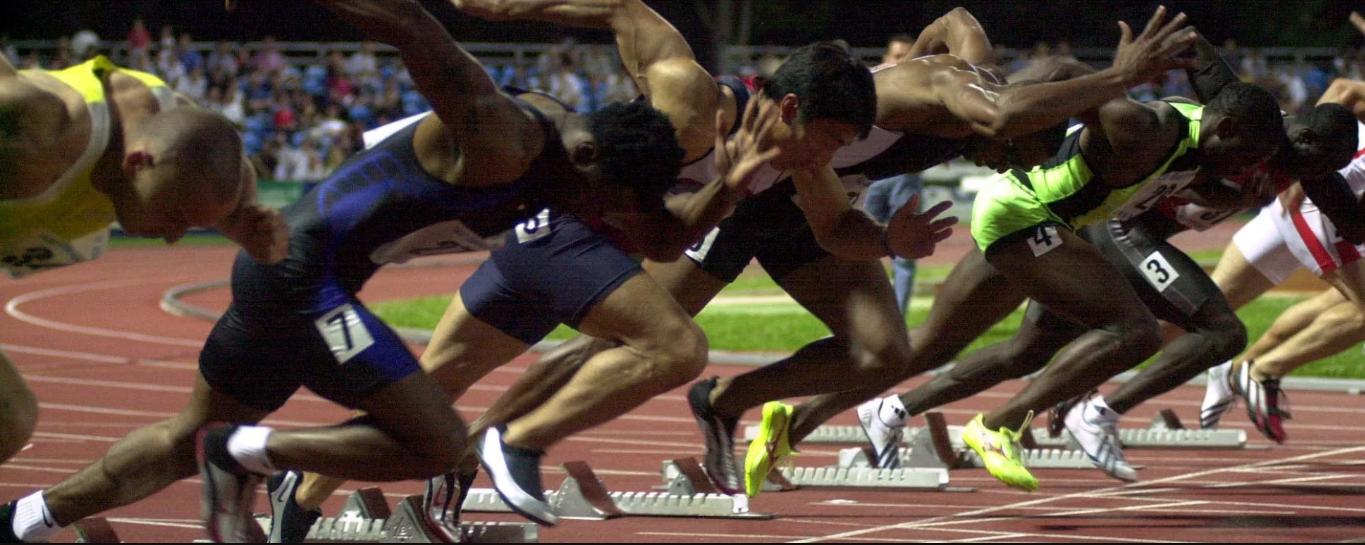In evaluating and teaching high-speed running mechanics, the coach must give the athletes key points on which to concentrate and consciously focus as they learn to re-program their motor patterns. It is useful to break down the
movement in a way that is consistent with a systematic teaching progression. We use six reference points or foci for developing the conceptual technical model, in the teaching progression employed, during video analysis to show faults and causes, and in making corrections. These six foci are:
1. Body Position – This is the most central focus for changes in the technical model and thus for improving performance. If the athlete cannot execute the correct body position with a high degree of skill, it is nearly impossible to optimize the other five foci. Conscious competence in this area must quickly give way to unconscious competence.
2. Recovery Mechanics – This is the first phase of the high-speed running cycle movement. Often thought of as a passive movement and traditionally called the “swing phase”, the mechanically efficient recovery of the limb sets up the other phases of the running stride for higher levels of mechanical efficiency.
3. Transition Phase – This is the phase of the running cycle where an abrupt change of direction of a limb must take place. Faults are often easily recognized in this phase, but they are almost always a product of a cause that is 180° on the other side of the stride cycle.
4. Ground Preparation Phase – This is the phase where the athlete must actively prepare the foot and the leg to strike the ground. From the point of view of determining the performance outcome, this is the second most important phase in the running cycle.
5. Ground Phase – This is the most important phase in the running cycle. Once the athlete leaves the ground, the flight path of the center of mass is unalterable until the next ground force application. Therefore, getting the Ground Phase right is essential.
6. Arm Action – This is the focus that has provoked some of the greatest disagreements between biomechanics and coaches. Biomechanics have contended that the arms balance the forces of the legs to support the body in the proper alignment. Coaches however have promoted that the arms “control the legs” and thus can positively impact performance.
At SPG we believe both are correct ! Schedule your evaluation to get Faster Stronger Better!
Mobile Concussion Testing now available using the Trazer Solution
Sports Performance Group is delighted to announce that mobile concussion testing is now available using TRAZER’s revolutionary technology. TRAZER is the recognized world-wide leader in the use of computer simulation for the assessment and enhancement of health, fitness, and physical and cognitive performance
The concussion crisis is a “source of significant pain” for parents, coaches from youth leagues to the NFL, and for those involved in all contact sports. The negative health impact of concussion on youth, collegiate and professional athletes is widely publicized and documented. The www.safekids.org website states that more than 90 percent of sports related concussions occur without the loss of consciousness! Call 917-545-7099 for an appointment or stop by Sportset to check out all the things TRAZER can do for your child’s athletic training.
Is Every trainer a Sports Specific Trainer ?
What to Look For in a Sports Specific Trainer
Everyone these days offers Sports Specific Personal Training. I guess anyone can go online to become certified. But would you entrust your child with a certified trainer? what should you ask and look for?
When looking for someone to train your child it’s best to look for specific credentials and ask the trainer if you can observe a session with another client before making your decision. Below are some ideas about what to look for in the trainer.
- What certifications does your child’s trainer hold and where did they come from?
- What is the trainer’s personal history? Does he/she hold a background in athletics?
- How many years has the trainer worked with children?
- How many years has the trainer devoted to Athletic Training?
- Has the trainer worked with any Elite trainers to develop a stronger background?
- Has the trainer helped to condition athletes in a variety of sports?
- What is the trainer’s training philosophy?
- Has the trainer published any books or articles in the field?
- Is the trainer able to handle special situations such as injuries?
- Does the trainer use up to date methods of training instead of just weights?
You should come armed with all of these questions and make sure the trainer can answer them. Your efforts into developing the best athletes are paramount to seeing that athlete continue to develop in his or her sport.You are entrusting your athletes’ dreams on this trainers expertise. Their future development depend on your educated choices.


